Imagine traversing time and weaving your way through diverse patches of history, where each thread tells the tale of the enchanting dream catchers. These intricate handwoven objects, dancing with feathers, beads, and brightly colored threads, carry eloquent stories of culture, symbolism, spiritualism, and psychology. Renowned for their captivating aesthetic appearances, dream catchers hold profound significance beyond their physical beauty. This statement unveils the labyrinth of the history, symbolism, and role of dream catchers in interpreting dreams, with a special emphasis on their capability to prevent death dreams.
History and Origins of Dream Catchers
Origins of Dream Catchers in Native American Culture
Dream catchers are a well-known symbol in Native American culture, particularly rooted in the traditions of the Ojibwe or Chippewa tribe. The Ojibwe word for dream catcher, “asabikeshiinh,” translates to “spider,” which reflects the web-like pattern present in the design of this artifact. Originally, they were small, crafted with willow hoops and sinew or cordage made from plants. The web-like pattern inside the hoop is intricately woven and is said to represent a spider’s web.
Historically, the Ojibwe would use dream catchers as protective talismans for infants and children to safeguard them from bad dreams and dark spirits. The round, woven “web” in the dream catcher would “catch” harmful dreams and prevent them from reaching the dreamer. These good dreams would slip through the tiny hole in the center and grace the sleeping person underneath, while the bad dreams, including visions of death and demise, would be caught in the web and evaporated once hit with the first light of dawn.
Dream Catchers: A Barrier Against Death Dreams
The Ojibwe tribe, who place significant value on dreams, view them as an integral part of daily life. Dreams fraught with death and the associated emotions of fear and dread were thought to influence reality. To combat these unsettling dreams, the Ojibwe tribe used what is now widely known as dream catchers.
These spiritual tools were thought to sift through dreams, allowing only the good ones to reach the sleeper through the delicate feathers attached to the dream catcher. Meanwhile, nightmares, particularly those regarding death, were believed to be ensnared in the enchanting web-like structure of the dream catcher, eliminating them with the morning sun’s first light, leaving the dreamer undisturbed.
Many Native American tribes beyond the Ojibwe adopted this belief over time, with the notion of dream catchers being a defense against death dreams and nightmares still preserved. Dream catchers, while maintaining their cultural significance, have also increasingly gained global appeal due to both their aesthetic charm and supposed abilities to ward off nightmares.
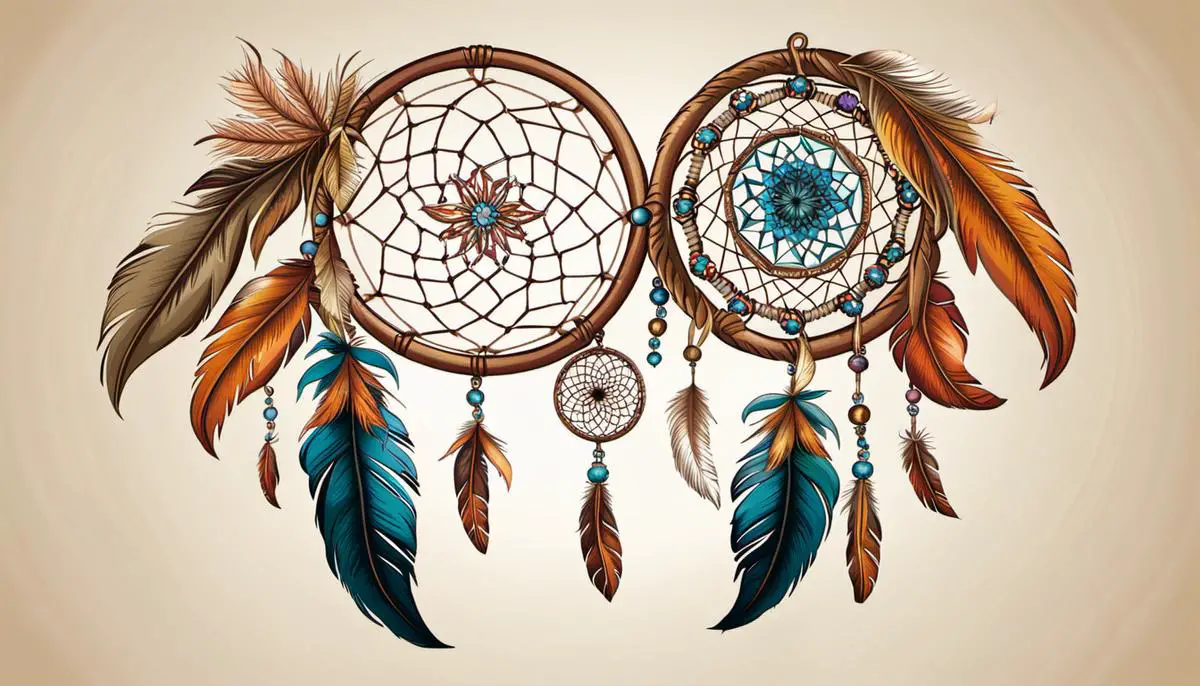
Symbolism in Dream Catchers
Decoding the Symbolism of Dream Catchers
The charm of dream catchers lies not just in their graphical appeal but also in the deep-rooted symbolism attached to each part of this unique indigenous artifact. Each element resonates with different life aspects, spirituality, and the ability to guard against negative dreams, such as death dreams. Appreciating these symbolic interpretations is a key step toward understanding the effectiveness of dream catchers in keeping away unwelcome dreams.
The Hoop: The Circle of Life
The hoop in a dream catcher symbolizes the circle of life in many Native American cultures. The continuous loop of the hoop signifies the endless cycle of life, death, and rebirth. In using a dream catcher to deter death dreams, the hoop adds an element of acceptance and peace in acknowledging the cycle of life, which can help in dispelling fear.
The Web: Catcher of Dreams
At the center of the hoop is a woven web designed to snare and trap bad dreams so they can’t reach the dreamer. The story goes that the negative energy from bad dreams, including death dreams, gets entangled in this web and destroyed by the first light of dawn.
Feathers: Channels of Good Dreams
Feathers serve a dual role. They allow good dreams that have been filtered by the web to gently descend and reach the dreamer while deflecting the negative energy from the trapped bad dreams. Feathers from different birds carry varied meanings, with owl feathers symbolizing wisdom and eagle feathers embodying courage.
Beads: Spiders and Ancestors
The beads on a dream catcher provide symbolic representation. Some tribes consider beads as symbols of the spider that teaches the art of weaving the web. Others believe that each bead represents an ancestor and their wisdom. This reinforces the dream catcher’s protective powers in preventing terrifying dreams.
Color Choices: Vibrations and Meanings
Colors used in a dream catcher are also important and carry symbolic meanings. Each color comes with its distinctive energy, so color choice can enhance the dream catcher’s potency in preventing death dreams. For instance, red symbolizes strength and vitality and can help to ward off dreams related to fear and death. Black signifies protection and introspection during dreamtime, while white is synonymous with purity and divine connections.
The world of dreams and the interpretations behind them is a fascinating aspect of history. Particularly in Native American culture, they devised a solution known as dream catchers, intended to act as a spiritual barrier. These dream catchers, with their intricate designs, were believed to discern the nature of dreams, allowing only positive ones to pass through to the dreamer. This capability of discouraging dreams about death is what makes dream catchers an intriguing phenomenon to delve into.
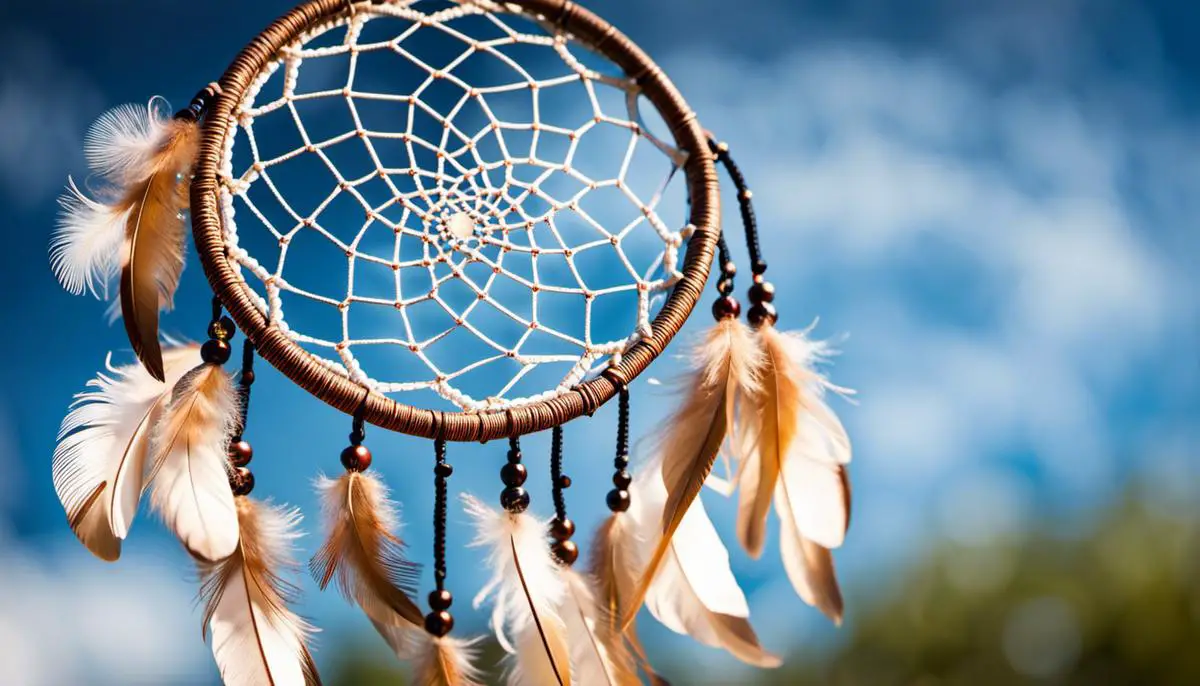
Dream Catchers and Their Role in Dream Interpretation
The Birth and Significance of Dream Catchers
Unfolding the history of dream catchers, it is crucial to mention that they trace their roots back to the Ojibwa (Chippewa) nation. This Native American tribe was the first to devise such an ingenious tool, which was promptly embraced by other tribes. Dream catchers are essentially made up of a hoop, crafted from willow tree branches, that is then adorned with personal and sacred objects like beads and feathers. The hoop holds a loose net or web at its heart. This web serves as the actual “catcher” of dreams, sifting through them, permitting only the positive dreams to seep through, thereby fostering a restful sleep.
Dream Catchers and Death Dreams
In the context of death dreams, or nightmares involving death, dream catchers play an essential role—as protective elements—in traditional belief systems. Death dreams can be extremely distressing, creating fear and disrupting sleep. According to cultural lore, a dream catcher suspended above the bed or near the person sleeping can intercept these unpleasant dreams, preventing anxiety and ensuring peaceful rest.
It is the web inside the dream catcher’s circle that ‘catches’ the death dreams. These are then believed to be held in captivity until morning light, when they are destroyed. Hence, the dream catcher serves to neutralize the power of the death dreams, ensuring they do not reach the dreamer.
Symbolism of Dream Catchers and Dream Analysis
Beyond their role in shielding individuals from death dreams, dream catchers are also symbolic and used in dream analysis. The dreams caught in the web offer insight for those experienced in dream interpretation. Each component of the dream catcher—a circle, web, feathers, and beads—holds symbolic significance and can align with motifs or symbols present within a dream.
For example, the circle represents the earth’s cycle or the circle of life, which could relate to themes of birth, death, and rebirth often found in dreams. Feathers, on the other hand, symbolize breath or air, essential for life, and could be interpreted as a life-giving force within the dream. This intricate interplay of symbols aids dream analysis and promotes a deeper understanding of both dreams and the self.
The Significance of Dream Catchers in Modern Times
In contemporary times, dream catchers have become more than just tools for intercepting nightmares or death dreams. They are increasingly recognized as symbols representing Native American culture and frequently used as decorative ornaments. Although many individuals today do not adhere completely to the traditional belief structures, dream catchers are still widely respected for their supposed power to shield against unwanted dreams and foster positive, restful ones—a belief that continues to offer solace and resonate with countless people worldwide.
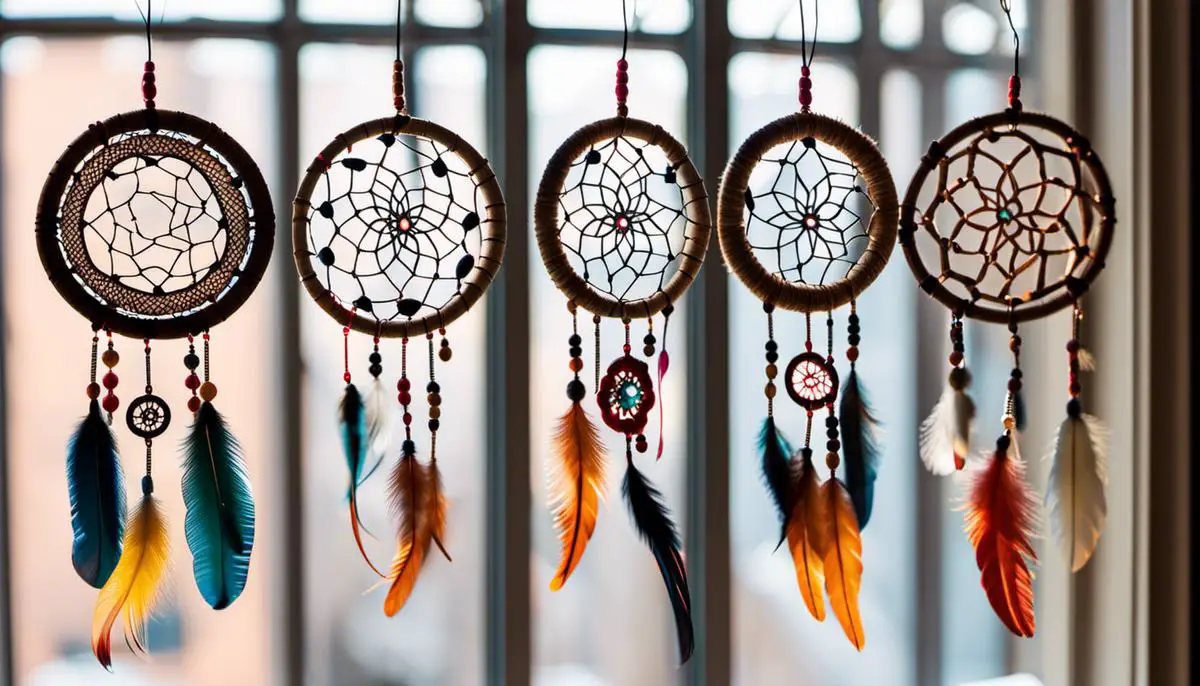
Dream Catchers in Preventing Death Dreams
Understanding the Essence of Dream Catchers
Dream catchers are ritual objects originating from Native American societies, specifically the Ojibwa Chippewa tribe. They are usually handmade, composed of a woven net or web encompassing a small circular or teardrop-shaped frame. Adorned with meaningful items such as feathers and beads, dream catchers are usually placed above beds or in close proximity to sleeping spaces. These captivating artifacts bear more than just ornamental value, being steeped in profound spiritual symbolism.
Dream Catchers and Their Role in Warding Off Negative Dreams
Dream catchers play a critical role in Ojibwe culture as virtual “filters” for dreams. According to native legend, the dream catcher’s woven web traps nightmarish dreams or visions, preventing them from reaching the sleeper. These harmful dreams, caught in the net, are said to perish with the light of day. Conversely, beneficial and positive dreams slip through the dream catcher’s center hole, flowing down the hanging beads and feathers to the sleeper below. In this way, dream catchers serve to protect during the vulnerable state of sleep, warding off nightmares and fostering positive dreams.
Dream Catchers and the Specific Prevention of Death Dreams
While dream catchers are not explicitly designed to ward off death dreams, their role as protective tools is inclusive of all forms of negative or harmful dreams. As the dream catcher filters out nightmares and adversarial dreams, it consequently aids in blocking death dreams — dreams associated with dying or the death of loved ones. The belief is that these distressing dreams are among those that are captured in the web and destroyed with the dawn.
The Power of Dream Catchers in Native American Culture
The power of dream catchers is widely respected in Native American culture, and many other cultures have adopted this belief. It is a spiritual practice that promotes peaceful sleep and an enlightened spirit. The process of crafting the dream catcher can also provide comforting and meaningful engagement, which aids in promoting positive mental health.
Psychological Perspectives on the Protective Role of Dream Catchers
From a psychological perspective, dream catchers may provide a placebo effect for the sleeper. The faith and belief in their ability to protect from disturbing dreams can alleviate anxiety, helping to encourage more peaceful sleep experiences, free from nightmares and death dreams. This implies that the comfort and security one derives from the use of dream catchers can greatly influence their quality of sleep and the nature of their dreams.
Dream Catchers: A Global Symbol of Protection
Dream catchers, once a symbol unique to the Ojibwe people, have now been embraced by various cultures across the world. Their significance and usage have expanded beyond their original purpose. Today, they’re utilized for their purported metaphysical properties, and have become popular in the fields of new age and holistic practices. Some use these woven charms as a connection to native spirituality, while others appreciate their aesthetic value and integrate them in their decor. Yet, the ancient belief that these talismans can offer protection and exude positivity particularly in guarding against death dreams continues to be held by many.
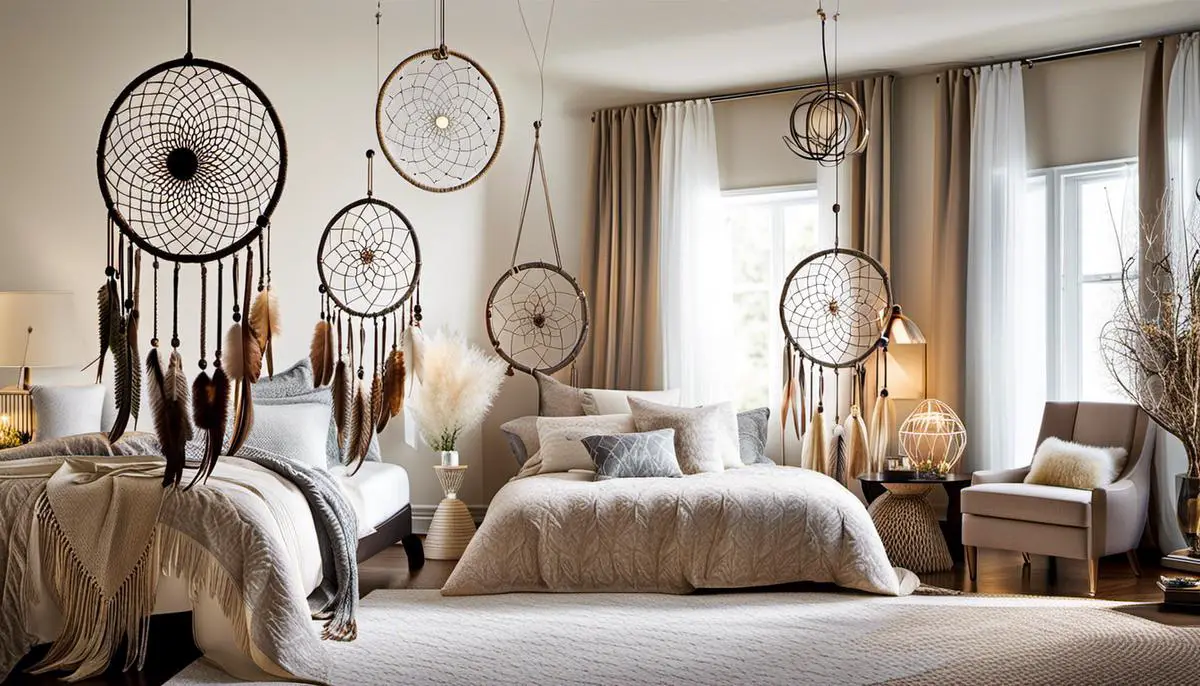
Scientific Perspectives and Psychological Viewpoints
The Origins and Functionality of Dream Catchers
The Ojibwe, an indigenous tribe in North America, were the original creators of dream catchers. These beautiful creations—hoops interlaced with intricate patterns and adorned with feathers—were initially used as amulets to shield individuals, especially children, from unpleasant dreams and nightmares. According to Ojibwe tradition, a dream catcher works as a dream filter. The good dreams would pass smoothly through the web and glide down the feathers to the dreamer underneath. In contrast, the negative dreams, including death dreams, would be entrapped in the web and destroyed with the dawn’s first light.
Dream Catchers and Death Dreams
The role of dream catchers in preventing death dreams stems from the broader belief in their power to filter out disturbing dreams and negativity. Essentially, death dreams are viewed as a type of nightmare or negative dream, thus the dream catcher should theoretically filter these out.
Scientific Perspectives on Dream Catchers
From a scientific perspective, the efficacy of dream catchers in preventing nightmares, including death dreams, largely falls under the realm of placebo effects. Placebo effects hinge on a person’s belief in the efficacy of an intervention. For example, if an individual truly believes that a dream catcher will filter out negative dreams, this belief may actually reduce the frequency or intensity of bad dreams, although not as a direct consequence of the dream catcher itself. Additionally, the calming, tranquil aesthetic of dream catchers may promote a serene sleeping environment, indirectly fostering blissful slumber.
Psychological Viewpoints on Dream Catchers
Psychologically speaking, dream catchers may serve as a form of cognitive reassurance. The belief in the protective power of dream catchers can act as a psychological buffer for alleviating anxiety relating to nightmares or fearful dreams. For individuals riddled by unsettling death dreams, the symbolic protection of a dream catcher may provide psychological relief, enabling a more restful sleep.
Moreover, dream catchers tap into the concept of “dream work” proposed by psychoanalysts. As per this, our subconscious minds are continuously at work during sleep, processing daily events, emotions, and thoughts. Dream catchers, by filtering nightmares, are thus believed to enable a smoother dream-work process, promoting wellness and psychological balance.
Dream Catchers: A Crossroads of Science, Psychology, and Tradition
In conclusion, while there is no concrete scientific evidence that dream catchers can physically ward off negative dreams, they hold significant cultural and symbolic value. They offer psychological comfort and, through the placebo effect, may help improve sleep quality. Thus, in preventing death dreams, the belief in the dream catcher is just as significant, if not more, as the dream catcher itself.
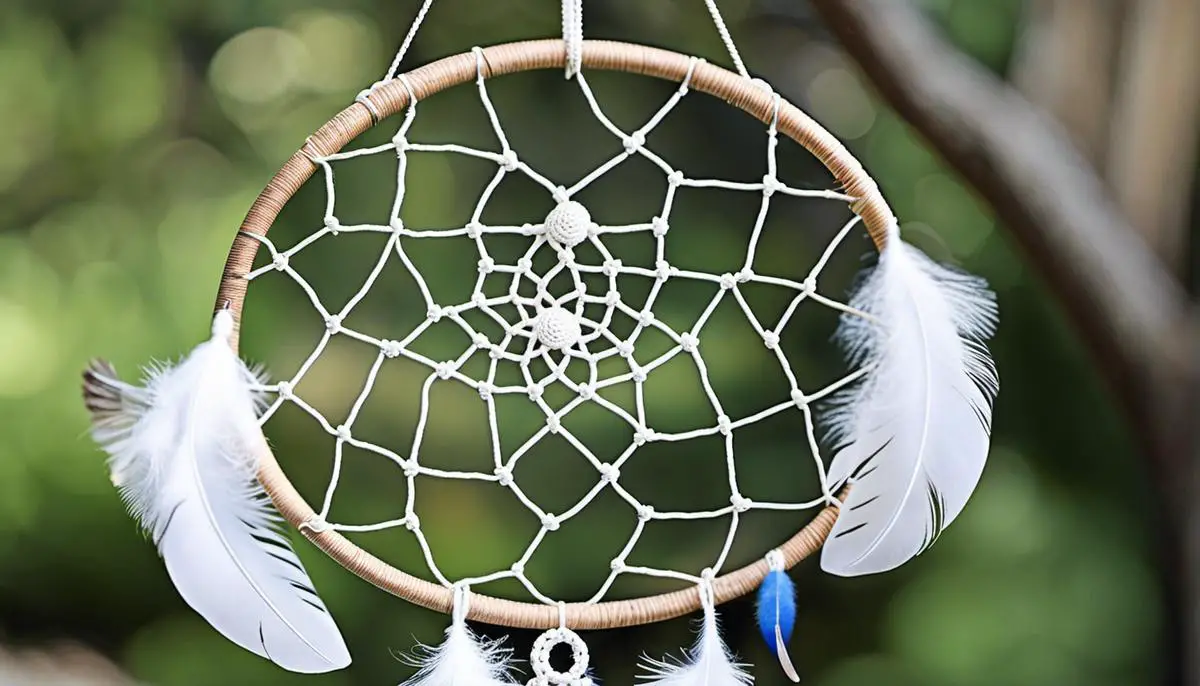
As we thread the needle through the rich tapestry of the dream catcher narrative, we find ourselves immersed in more than merely a tale of traditional Native American artistry. These spellbinding objects do not simply stand as cultural souvenirs, but they also carry symbolic meaning and interpretative value. Interweaving the empirical scientific perspectives and psychological viewpoints, the dream catchers open up a dialogue that fosters understanding and respect for indigenous cultures and their belief systems. No matter what the canvas of modern science or psychology paints, the mystique and allure of dream catchers, and their poignant position in preventing death dreams, continue to weave its spellbinding web across cultures and over time.
